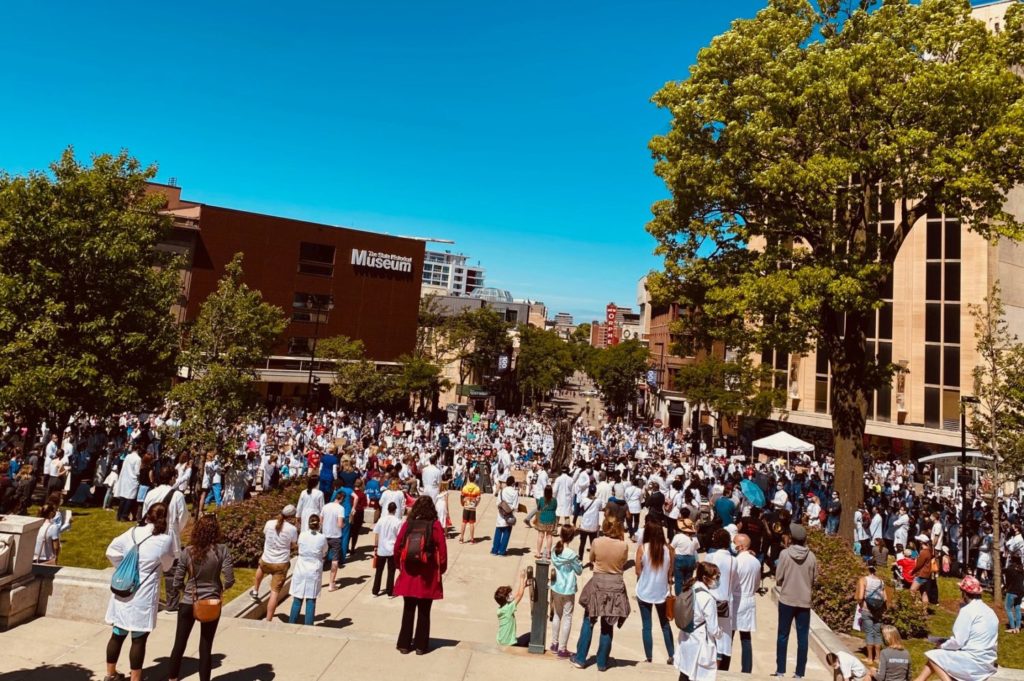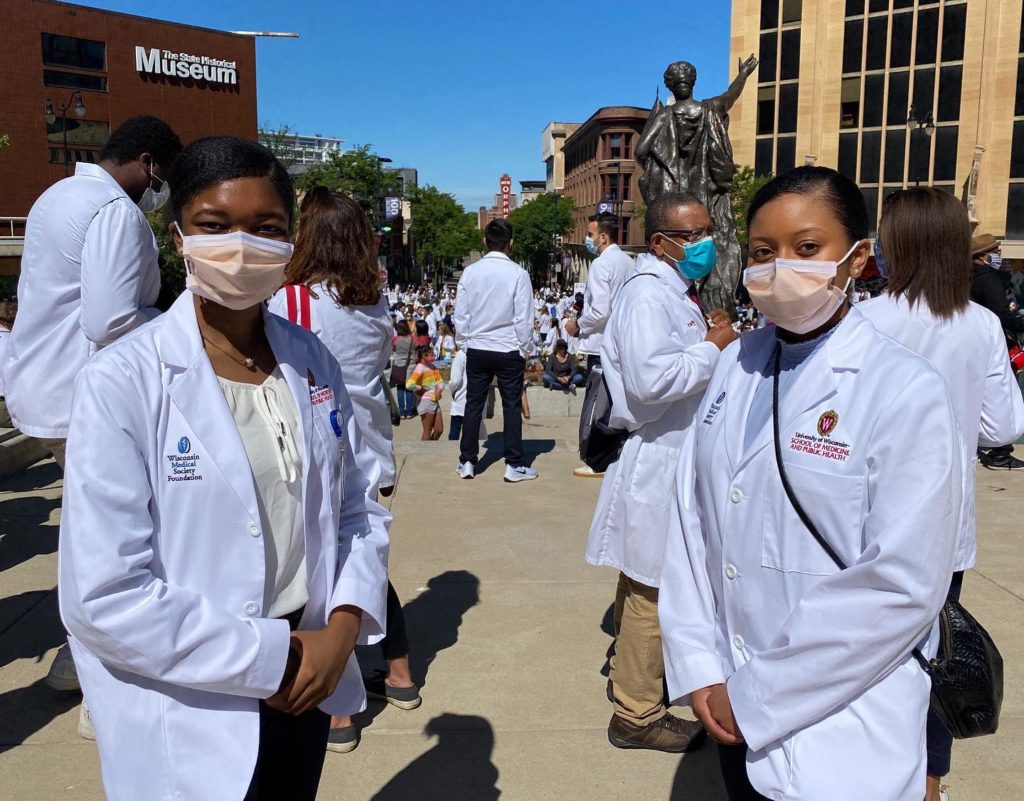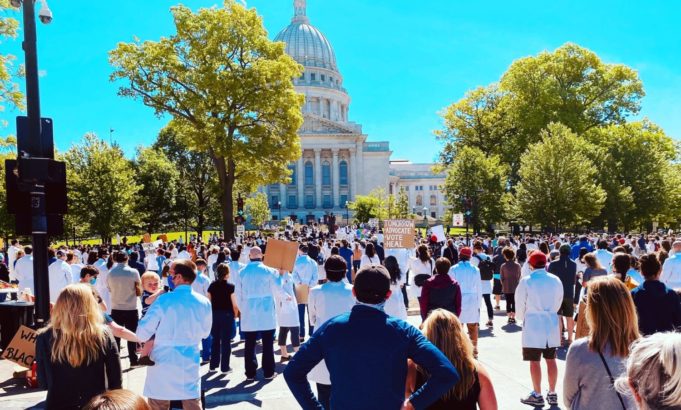There was a sea of medical professionals in white coats at the Wisconsin State Capitol June 13 as hundreds rallied to eliminate racism in the practice of medicine and to raise awareness of how bias impacts patient care. The event was hosted by UW-School of Medicine and Public Health (UWSMPH)’s Student National Medical Association.
“There is a social media graphic going around right now and it says, ‘When George Floyd was on the ground in his last moments of life, he cried out for his mom,” Dr. Jasmine Zapata told the crowd as the event opened. “And the social media graphic said, ‘When he cried out for his mom, every mom in the world heard him.’
“Just like every mom in the world heard the cries of George Floyd, in the same way when George Floyd was on the ground begging for his life … no oxygen flowing to his brain, his neck compressed and he cried out ‘I can’t breathe!’ When he did that, every health care professional around the nation heard him and that is why we are here today,” she added.

Wisconsin Medical Alumni Association)
Dr. Zapata is a Madison-area author, physician, health empowerment educator and entrepreneur who serves as an advisor to the students of the Student National Medical Association. She was one of the many speakers in the line-up for the “White Coats for Black Lives” rally that called to dismantle racism in health care.
“We have the power now to save plenty of Black lives in the future,” Zapata said, “so thank you to everyone who came out here today so that we can dismantle racism within the clinic walls and outside.”
Dr. Patrick Lee, a 3rd-year general surgery resident at UW-Madison, spoke at the event.
“I am the son of a former Chicago police officer and I’m a city in a country I love – a country whose flag is the only flag that I know. A flag that represents hope and freedom,” Dr. Lee told the crowd. “However, today many people are still looking for that hope and yearning for that freedom.
“When I saw the video of George Floyd it reminded me all too well how close I could have come to being in that situation,” he added.

Diversifying the field of medicine should not be an important thing just for the physicians of color, Lee said, but it should be a goal of all of us to address implicit bias in health disparities.
“As physicians in health care work, there is power in our voice … there is access and the ability to affect change,” Lee said. “According to the AAMC, African-Americans make up about 5 percent of the active physician workforce. You can imagine the population looks pretty thing for a medical student when you’re a minority. It should not be a surprise that we want to be physicians, it should be an expectation.”
WhiteCoats4BlackLives (WC4BL) is a medical student-run organization born out of the National White Coat Die-In demonstrations that took place on December 10, 2014. Their vision is to “safeguard the lives and well-being of our patients through the elimination of racism.”
Baillie Frizell, the event coordinator for SNMA, helped to pull together the event.
“In the past two weeks, Dr. Zapata and SNMA have created a [WhiteCoats4BlackLives] chapter. It’s an organization whose mission is to eliminate racism in the practice of medicine and recognize racism as a threat to the health and well-being of people of color,” Frizell says. “We are so excited that you are all here today to join us at just the beginning of this movement. We have a lot of work to do.”

(Photo:
Wisconsin Medical Alumni Association)
Dr. Tracy Downs, who is a mentor for the SNMA students, said it was impressive to see how many people were attending the event to “stand up for people who can’t stand up for themselves and have never been stood up for.” He told the crowd how proud he was of the students for organizing the event.
“They have spent countless hours preparing for this day. There is a lot of behind-the-scenes work as well as the speaking that they’ve poured their hearts and souls into,” he said. “When you say that our future looks bright … it does indeed.
“One of the many things that we pride ourselves on here in Wisconsin is that we teach our students how important the social determinants of health are in terms of its impact on quality of life and also in the number of years of life,” he added. “We also know how that impacts an individual, how it impacts communities and how it also impacts populations. Today is the day when we are now the student and our students have become the teachers and I am looking very much forward to what they are going to teach us and how we can combat this ugly thing called racism.”










